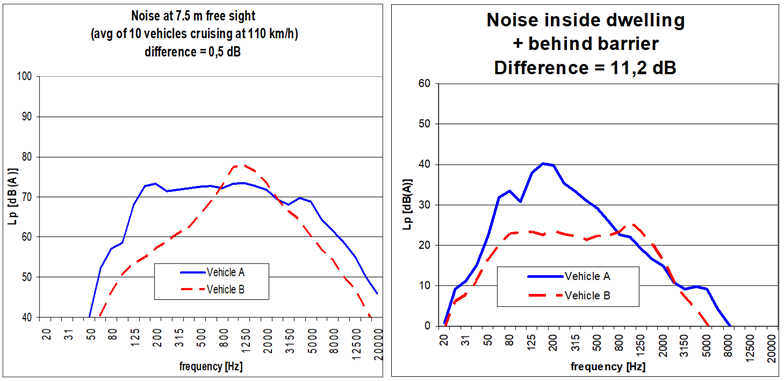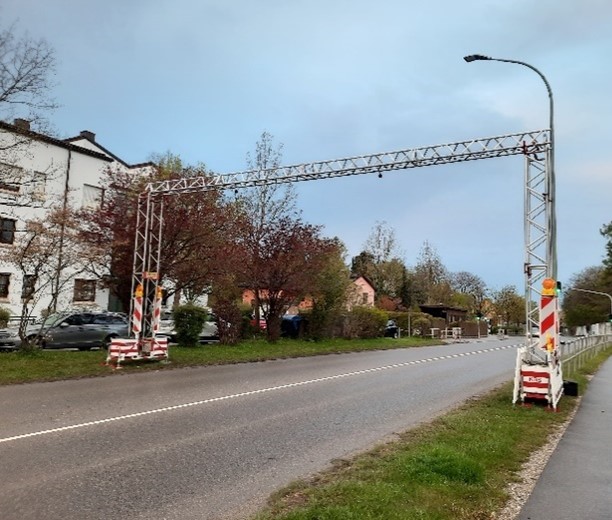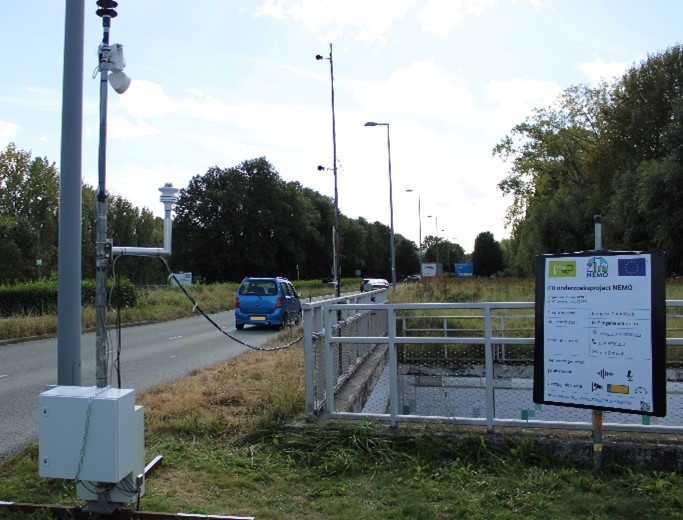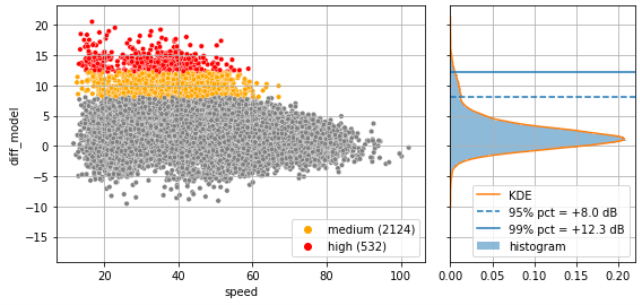Remote Sensing for Acoustic Vehicle Classification – A News Update From the NEMO Project on the Detection of High Emitters
By Erik de Graaff (erikdegraaff@mp.nl) and Bert Peeters (bertpeeters@mp.nl) M+P, the Netherlands
The noise emission of Powered Two Wheelers (PTW) is often discussed with high emotion but suffers from objective data. M+P and various partners are developing a remote sensing solution for vehicle noise within the European NEMO project for the objective detection and analysis of High Emitters.
Why is the noise of motorcycles relevant?
Erik de Graaff explains: “The annoyance and health burden related to traffic noise can be split into two issues: the long time-averaged noise level (Leq) and peak noise levels due to single events (Lmax). The noise of PTW is normally not an issue for the Leq. Traffic volumes are low and noise levels during cruising are on average lower than for cars, certainly at higher speeds. Noise complaints about PTW are mostly connected to single events. Noise events of PTW attract the attention of local residents, due to high noise levels and/or specific frequency content. We see a big scatter in the noise emissions of PTW. Most of them are as low as normal cars, but some of them are much louder. This is mainly caused by two issues: modified exhaust systems and high acceleration. Both can lead to 15 dB(A) increased noise levels and the combination could lead to a +30 dB(A) in noise level. Added to the increase in dB(A), such PTW emits a strong transient tonal component connected to the firing frequency of the engine. As this tonal component contains lower frequencies than standard traffic noise, it carries further into the environment and into houses. Also, the human brain is more sensitive to tonal sounds than to broadband noise. Such modified exhaust systems could be illegally manipulated by the owner, e.g. by removing parts or mounting ”grey imports”. But they could also be legally type-approved under the loopholes of older type approval methods. Recent changes in the latest type approval methods significantly reduce the options to bypass the noise reduction requirements of new vehicles. But existing vehicles on the street and their replacement silencers can continue to operate legally under older versions of the type approval method.“

What do we need a roadside measurement system for?
Bert Peeters continues: “The general issue is quite clear, but up to now we lack objective data on how severe the issue really is. We need these data to be able to separate the real noisy offenders from the regular motorcycle users. What are the numbers of noisy vehicles, what is their driving behavior, what is their technical status, what is the scatter? That is exactly where the NEMO project steps in. With help of remote sensing technology, NEMO aims at developing a roadside measurement system that can detect the noise- and tailpipe emission of vehicles when they pass by in normal traffic. M+P is involved in the noise emissions part, together with Müller-BBM (DE) and SINTEF (NO). A smart camera provides the license plate for each vehicle. Various microphones provide an acoustic signature of the pass-by event. Using localization and background noise algorithms, we make sure that the registered noise is indeed coming from the passing vehicle, and not from another nearby vehicle or any other noise source. Multiple sensors register the vehicle behavior in terms of speed, acceleration, position, engine speed, etc. Measuring the driving conditions is important if we want to have any chance of relating the data to the vehicle regulations, and also if we want to positively influence the road users’ behavior. I have not seen this element in other noise enforcement solutions so far. All data are sent over and stored on a central server, but only after they have been anonymized. Privacy is an important issue at this stage. Last winter we have been testing a prototype version in traffic in the city of Rotterdam, Netherlands. Due to wintertime mainly cars and trucks have been measured and little PTW. A huge amount of interesting data is coming out, but the most interesting question at this point is: How can we define a high emitter? We have been studying various approaches, such as an absolute noise level, a certain frequency response, a noise level relative to the type approval value, a noise level as a function of acceleration, and various others. What seems to be successful so far is the comparison between the measured noise level for each vehicle and a reference level for similar vehicles under similar conditions, which is derived from the measurement data after a model training phase [see Figure 3]. Besides acoustics, there is also a legal side to this question, which we will discuss with our client, the European Commission.”



What is coming up?
“This summer we are aiming at more measurement locations with different speed and acceleration behavior and especially with more motorcycles. These measurements will help to improve the remote sensing system and to quantify the accuracy under various conditions. Meanwhile, we will discuss these results with representatives of the Commission, industry, citizen groups, and other stakeholders. At this stadium, the focus is on data collection and classification methods, not on police enforcement. For enforcement, significant steps need to be taken in the legal framework, both for noise and for privacy. A more likely next step would be a noise-based access restriction to certain areas (road tolling, environmental zones), and to raise awareness with owners and drivers of noisy cars and motorcycles.”
References:
-Earlier NNI publication on NEMO http://noisenewsinternational.net/nemo-noise-monitoring-of-individual-road-and-rail-vehicles-the-challenges/
-NEMO website https://nemo-cities.eu/
-NEMO Test location Rotterdam https://www.youtube.com/watch?v=p_lAh7SDeqM


